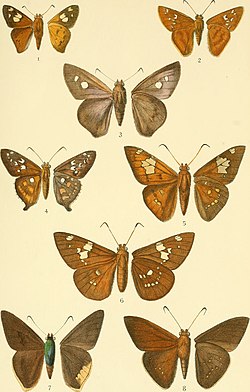| Euriphellus euribates | |
|---|---|
 | |
| Euriphellus euribates polygius figure 5 male figure 6 female | |
| Scientific classification | |
| Kingdom: | Animalia |
| Phylum: | Arthropoda |
| Class: | Insecta |
| Order: | Lepidoptera |
| Family: | Hesperiidae |
| Genus: | Euriphellus |
| Species: | E. euribates |
| Binomial name | |
| Euriphellus euribates (Stoll, 1872) | |
| Synonyms | |
List
| |
Euriphellus euribates is a species of butterfly in the family Hesperiidae. [1]